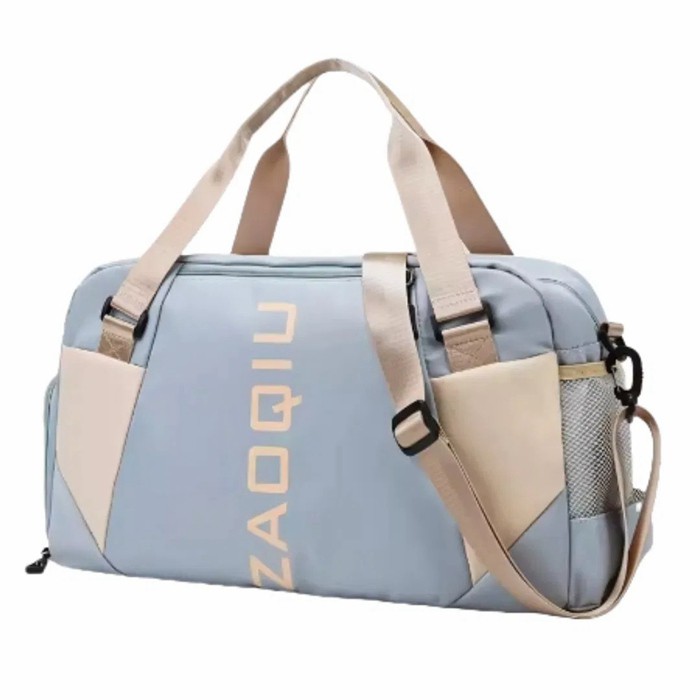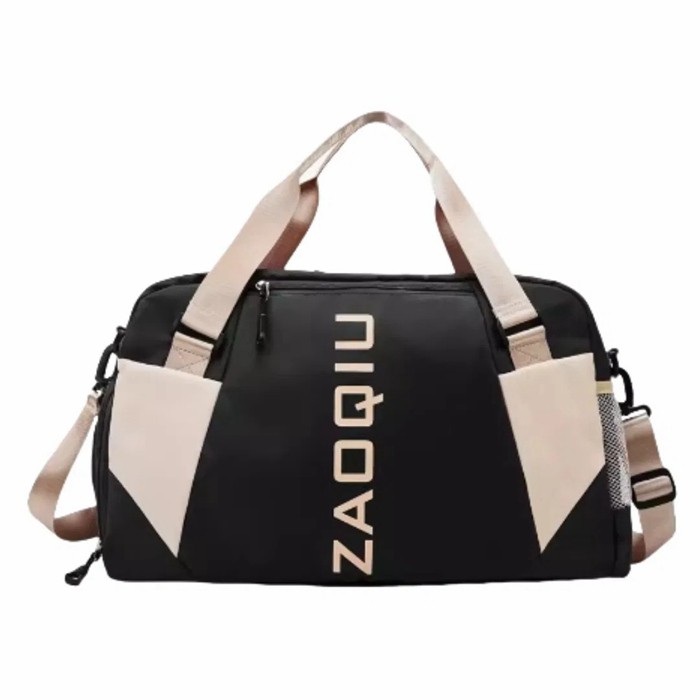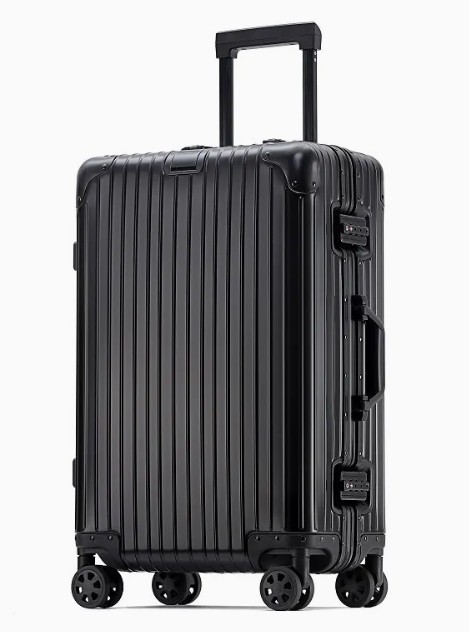Your Go-Anywhere Gear Hauler: The Essential Guide to Portable Travel Bags
Product description
Forget bulky suitcases for every trip. The unsung hero of smart travel is the portable travel bag. Lightweight, packable, and incredibly versatile, these collapsible companions are perfect for adventures big and small, acting as your primary carry-on, a trusty secondary bag, or an emergency overflow solution. Let's dive into the world of these essential travel tools.

Product Introduction: Compact Powerhouse
Portable travel bags (often called duffel bags, packable bags, or carry-alls) are defined by their flexibility and packability. Unlike rigid luggage, they typically feature:
Ultra-Lightweight Construction: Designed to add minimal weight to your load, often weighing just ounces.
Collapsible/Packable Design: Folds or rolls into its own pocket or a tiny pouch, stowing effortlessly inside your main luggage or backpack when not in use. Pull it out when you need extra space!
Simple & Durable Closures: Reliable zippers (often water-resistant) or sturdy drawstrings with toggles for quick access and security.
Multiple Carry Options: Versatility is key! Look for:
Comfortable Shoulder Straps: Adjustable and often padded for hands-free carrying.
Handles: Top grab handles or side handles for short carries or lifting.
Backpack Straps (on some models): Transforms the bag into a backpack for longer treks or uneven terrain.
Functional Organization: While minimalist, many feature:
A large main compartment (sometimes with a simple liner).
A zippered front or end pocket for essentials like documents, phone, or snacks.
Internal mesh pockets or slip pockets.
Compression straps (external or internal) to secure the load and minimize bulk.
Variety of Sizes: Ranging from small daypack sizes (10-20L) perfect for essentials, to medium weekenders (30-50L), up to large duffels (70L+) capable of holding significant gear (though check airline size/weight limits!).

Material Matters: Balancing Weight, Durability & Water Resistance
The choice of material significantly impacts the bag's performance, weight, and price:
Ripstop Nylon (e.g., 210D, 420D):
Pros: Excellent balance of lightweight, durability, and tear resistance (the "ripstop" weave prevents small tears from spreading). Often has a water-resistant coating (DWR). Very common and versatile. Higher denier (D) numbers generally mean thicker, more durable fabric.
Cons: Can be less abrasion-resistant than heavier fabrics over very long periods; water resistance is usually light shower protection, not submersion.
Polyester (e.g., 600D, 1000D):
Pros: Generally more affordable than nylon; highly resistant to UV fading and abrasion; often has good water resistance. Higher deniers offer robust durability.
Cons: Can be slightly heavier than comparable nylon; less tear-resistant than ripstop nylon.
Technical Fabrics (e.g., Cordura Nylon, Tarpaulin):
Pros: Top-tier abrasion and tear resistance (Cordura is legendary for durability). Often highly water-resistant or waterproof. Ideal for rough handling or outdoor adventures.
Cons: Significantly heavier; usually more expensive; less packable due to stiffness.
Eco-Friendly Options (e.g., Recycled PET RPET):
Pros: Made from recycled plastic bottles, reducing environmental impact. Performance often comparable to virgin polyester.
Cons: Availability and variety might be less than traditional fabrics; durability can vary slightly.
Liners: Many bags use a lighter nylon or polyester taffeta lining. Some feature waterproof TPU (Thermoplastic Polyurethane) coatings or laminated liners for better water protection inside.

Where Do Portable Travel Bags Shine? Key Use Cases
Their versatility makes them indispensable for numerous scenarios:
The Ultimate Carry-On Companion: Pack it flat in your main carry-on suitcase. Use it during your trip as a day bag for sightseeing, beach trips, or shopping. On the return journey, fill it with souvenirs as your personal item/second carry-on.
Weekend Warrior Essential: Perfect for short 1-3 night trips where a suitcase is overkill. Easily fits in overhead bins or under seats (check size!).
Adventure & Outdoor Gear Hauler: Ideal for carrying gym clothes, hiking gear, sports equipment (shoes, yoga mats), or wet gear (thanks to easy-clean materials). Backpack straps are invaluable here.
Everyday Versatility: Great as a gym bag, overnight bag, picnic tote, or even a large grocery bag.
Emergency Overflow Bag: When your main luggage is bursting at the seams, whip this out to avoid checked baggage fees or simply organize excess items. A travel lifesaver!
Secondary Luggage on Complex Trips: Perfect for side excursions from a main base where you don't need your whole suitcase.
Q: How durable are packable travel bags really? Won't they rip easily?
A: Modern ripstop nylon and polyester fabrics are surprisingly durable for their weight. While they aren't designed for dragging over sharp rocks or extreme overloading, they handle typical travel wear and tear, gym use, and being stuffed into overhead bins very well. Choose a higher denier (e.g., 420D+) and reputable brands for maximum durability. Avoid overstuffing excessively.
Q: Are they waterproof?
A: Most standard packable bags feature water-resistant coatings (DWR) that shed light rain or splashes. They are generally NOT fully waterproof unless specifically advertised as such (look for terms like "TPU laminate," "waterproof zippers," and sealed seams). For heavy rain or submersion, use a separate waterproof pack liner/dry bag inside or choose a dedicated waterproof model.
Q: Can I use a large packable duffel as my only checked bag?
A: You can, but consider: 1) Structure: Lack of rigidity means fragile items need careful packing/padding. 2) Protection: Less protection from rough handling vs. a hardside case. 3) Weight Limits: It's easy to overpack soft bags. Ensure you stay under airline weight limits (typically 50 lbs / 23 kg) to avoid fees. They are often best as carry-ons or supplements.
Q: How do I clean my travel bag?
A: Spot cleaning is usually best. Use a damp cloth with mild soap for dirt or spills. For deeper cleaning, check the care label. Most can be hand-washed gently in lukewarm water with mild detergent, rinsed thoroughly, and hung to air dry completely (never machine wash/dry unless specified, as heat can damage coatings and fabric). Avoid harsh chemicals.
Q: What size should I choose?
A: It depends on your primary use:
Day Bag/Personal Item: 10-25 Liters.
Weekend Trip/Gym Bag: 30-50 Liters.
Primary Carry-On/Extended Trip Supplement: 40-70 Liters (but always verify airline carry-on size restrictions for larger sizes!).
Large Gear Hauler/Checked Bag Alternative: 70L+.
Key Tip: Consider how small it packs down – a 70L bag might pack smaller than you think!

Embrace the Freedom of Packable Travel
Portable travel bags offer unmatched flexibility and convenience. By choosing the right material for your needs and understanding the vast range of sizes and features, you can find the perfect packable companion. Whether it's stashed in your suitcase "just in case," serving as your go-to gym bag, or carrying your essentials on a weekend escape, this simple piece of gear empowers you to travel lighter, smarter, and more prepared for anything. Throw it in your bag and go explore!
Recommended products




